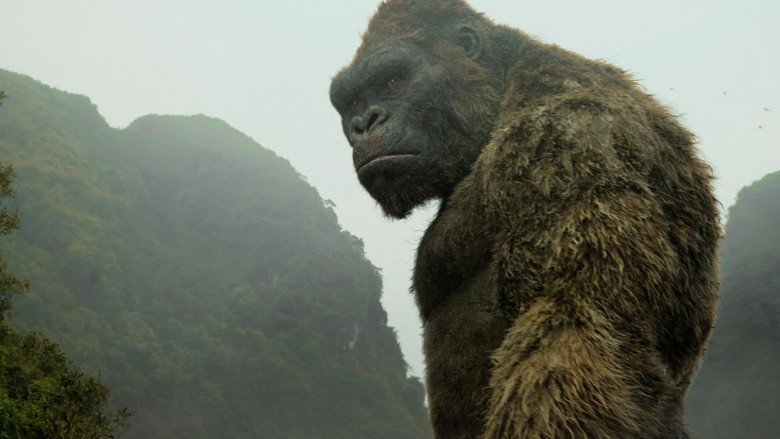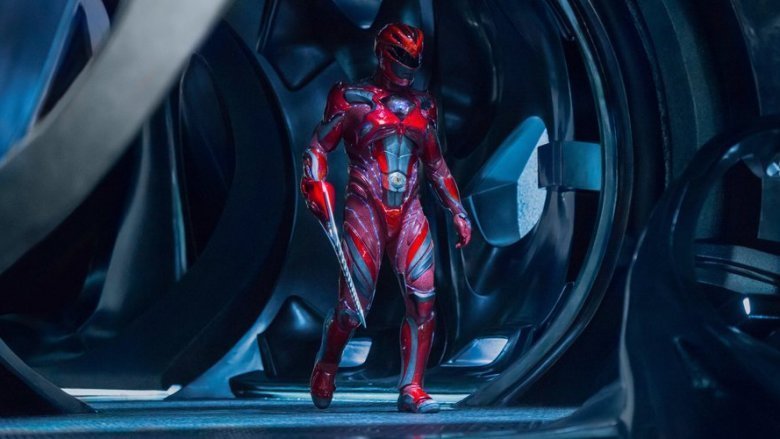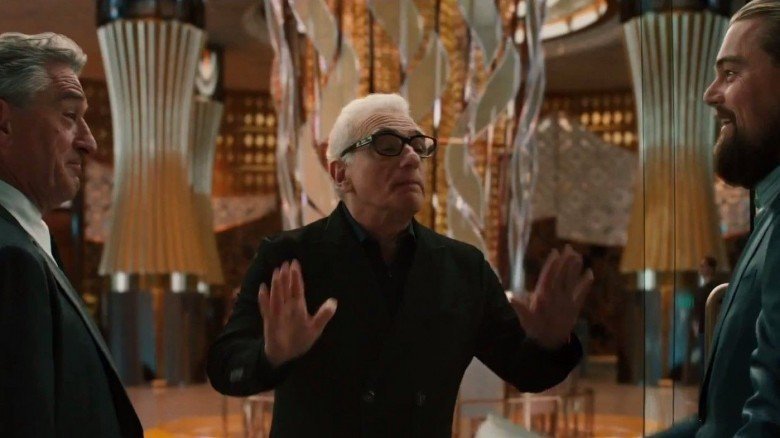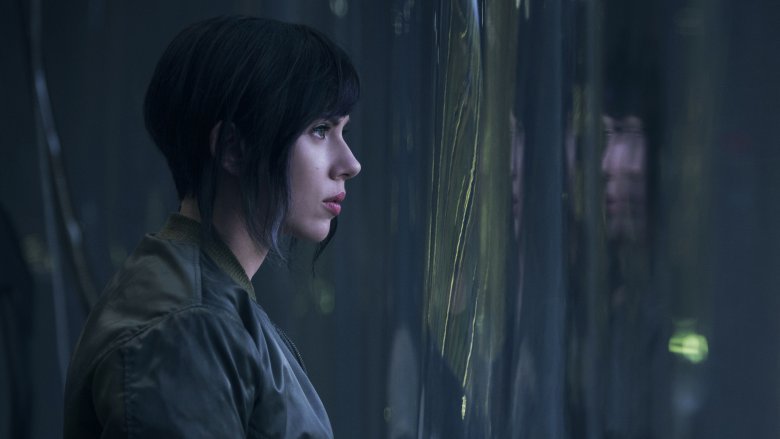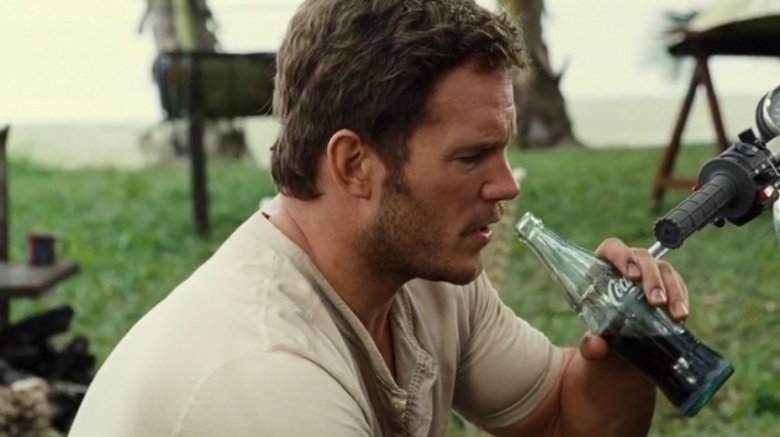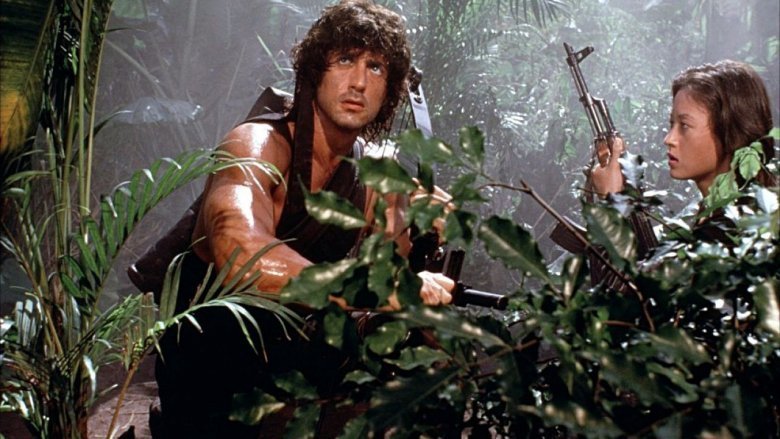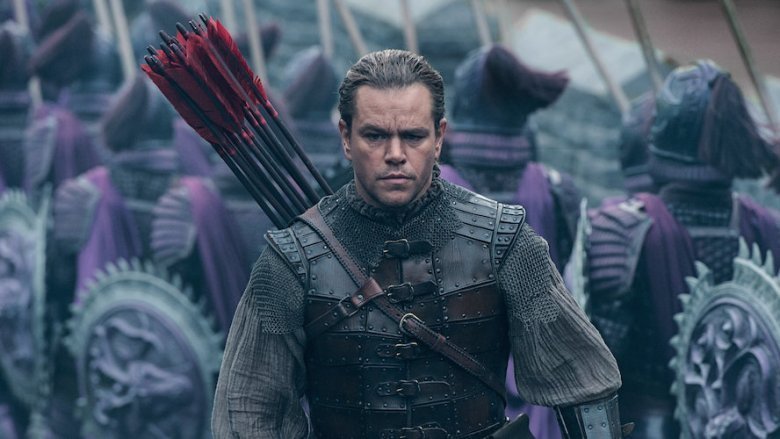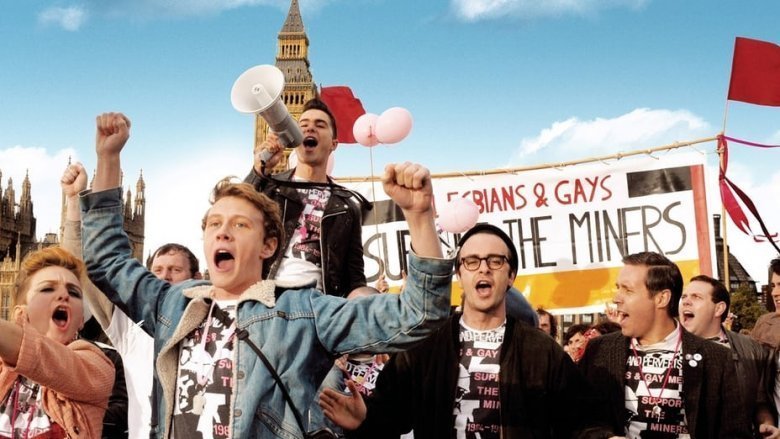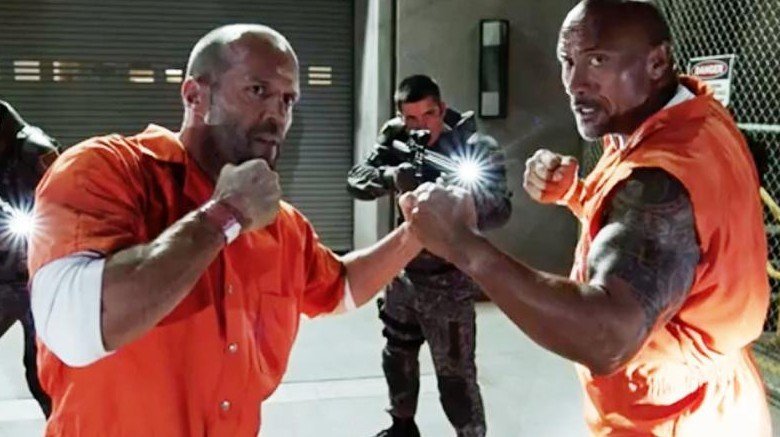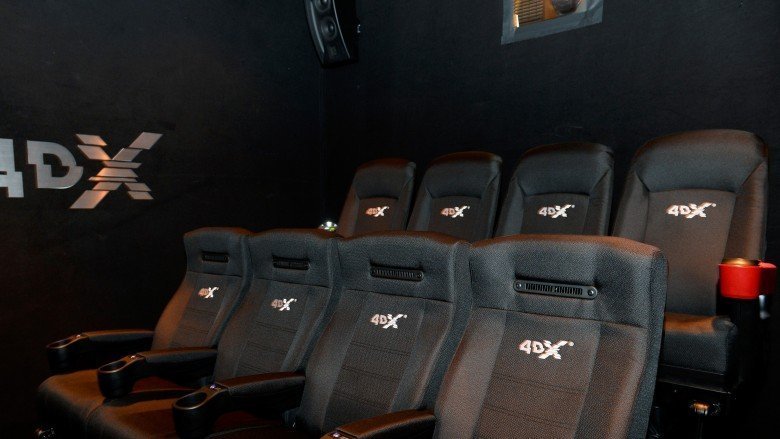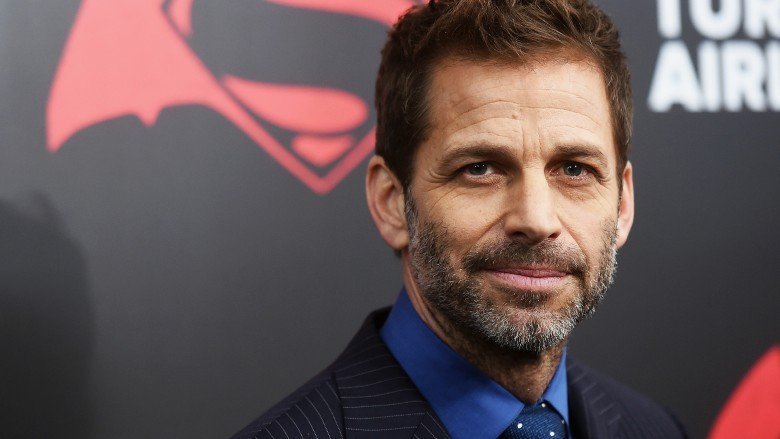The Biggest Regrets The Movie Industry Will Have In 20 Years
All is not well in Tinseltown. While box office receipts are up, there are still some disturbing trends in the movie industry caused by bad habits and an aversion to risk on the part of major movie studios.
You need only look at the summer of 2016 — when tentpole franchise extensions that seemed like surefire bets underperformed, and the buzz was around "Stranger Things," an original Netflix series that harkened back to the glory days of Hollywood in the '80s — to see the downside of the big studios' focus on established brands over original ideas. Movie studios seem dangerously behind the times. If Hollywood ever does recover from its current state, it's going to look back at today and cringe.
Betting the farm on remakes, reboots and sequels
The first week of April 2017, the top movies at the box office included a live-action version of a Disney animated film from 1991, a controversial adaptation of a Japanese anime from 1995, and a big-screen version of a long-running kids TV series. But the movie that scored the best reviews, strong box office receipts and highest audience ratings was a low budget horror film with an original script from a comedic actor making his big screen writing and directing debut. After all the hype and obscene amounts of money spent to bring Power Rangers, Beauty and the Beast, and Ghost in the Shell to the big screen, the movie that will be best remembered two decades from now will be Get Out, the sole original concept.
Twenty years ago, there were plenty of sequels and unnecessary updates of classic franchises. (There was even a poorly received Power Rangers movie in 1997.) But today, it seems like most major releases are either remakes of popular films or adaptations of comic books, '90s TV series, cereal mascots, or literally any existing property. Will any of these movies be remembered two decades from now when they've been rebooted ad nauseam? The Hollywood landscape in 1997 was fairly risk-averse. But compared to 2017, the late '90s look like the freewheeling Hollywood of the 1970s.
Making everything dark and gritty
Batman Begins was a masterpiece in turning something colorful and cheesy into a gritty, dark, noir-ish, realistic narrative — as realistic as a crime fighter dressed as a bat can be, anyhow. It also, as explained by The Verge, launched a trend that continues to this day: taking an old "kiddie" property and updating it for the cynical adult crowd. Problem is, going gritty doesn't always work. In fact, it often fails, and it's leaving Hollywood with egg on the face.
Christopher Nolan successfully gritted up Batman because, at his core, Batman is a gritty, dour character. Then Hollywood gritted up Power Rangers — the story of happy, well-to-do teenagers saving the world because they're good people. When you darken a story like that, or one like Superman's that's synonymous with optimism and hope, you're not being gritty for art's sake. You're being gritty because that's what trending. Financially, it's no guarantee — 2017's Power Rangers underperformed, as did Fant4Stic (the 2015 Fantastic 4 movie with the worst title ever), Miami Vice, and others. Even gritty films that made money, like Dawn of Justice and Amazing Spider-Man, are often now regarded as failures that people saw once but never again.
Like anything else, gritty works when it's warranted. When it's done simply because the movie industry thinks audiences want all grit, all the time, it makes them look goofier than a hundred Adam West KA-POWs.
Allowing the midsize movie to die
Two decades ago, a typical movie studio's development slate included everything from blockbuster action flicks to modestly budgeted romantic comedies and Oscar bait fare. Today, studios make almost exclusively one thing: tentpole blockbusters with budgets that rival the per capita income of small island nations.
Sometime over the past decade or so, Hollywood stopped caring about the midsize movie. Marketing budgets got bigger. Visual effects got flashier. Original scripts geared toward discerning adult audiences were tossed out in favor of safe bets like blockbusters based on existing properties and disposable genre fare meant to part teens from their allowances. As the international market became a crucial part of yearly profit margins, studios ignored the kind of serious filmmaking they once made room for on their production schedules in favor of increasingly lavish spectacles. Giant robots laying waste to major metropolitan areas works in any language. Subtle character drama, not so much.
While it's easier than ever to make and release a film thanks to innovations in digital technology, the top movie studios seem to only be capable of producing blockbusters whose marketing budgets alone are the equivalent of 10 films Harvey Weinstein would've made back in the '90s. When Netflix is snatching up a Martin Scorsese/Robert De Niro gangster movie that's deemed to be too much of a risk for Paramount Pictures, something is definitely off.
Whitewashing
Today, we cringe at the sight of Mickey Rooney in yellowface in Breakfast at Tiffany's. 20 years from now, future generations will wonder what the hell the Ghost in the Shell filmmakers were thinking by casting Scarlett Johansson as Major, a character who is Japanese in the original manga and anime. And yet, white actors playing roles meant for other ethnicities is still prevalent on the big screen. "But we need stars to open movies," the studios moan. Except Ghost in the Shell failed at the box office, and the era of movie stars being the golden ticket to guaranteed success is long gone. So why is whitewashing still a thing?
Hollywood doing this in 2017 is downright embarrassing for the industry. Twenty years from now, as America gets even more diverse, Hollywood's insistence on casting actors in roles they have no business taking on will be seen for the sham it has always been.
Endless product placement
Product placement in movies isn't exactly new — even silent movies had them. Lately, however, it seems they've kicked up the whole "our movie is actually a commercial" thing several dozen notches, and it's really starting to be a bad look for all.
As The Balance wrote, product placement in movies can take many different forms. Sometimes it's really subtle, like everybody drinking the same beverage or driving the same car. Other times it's blatant, with logos thrown just about everywhere in every scene. It's the latter that's making movies look bad — Man of Steel, for example, made over $160 million just from brands paying to be in the movie. Between Gillette, Walmart, Twizzlers, Sears, Kellogg's, Carl's Jr., and many others, the movie was 50 percent superhero and 50 percent "don't forget to buy our stuff on the way home."
Sometimes, when done right, product placement can work. E.T. wouldn't be E.T. without Reese's Pieces after all, and Wayne's World shilled for Pepsi, Doritos, Reebok, and Pizza Hut by making clever meta jokes about selling out that totally fit the movie's tone. But if all you do is show product after product for 90 minutes, you're not making cinema — you're filming an ad. And sooner or later, moviegoers sick of being sold to will react by taking their wallets elsewhere.
Sloppy titling practices
Fant4Stic isn't the only film to fall victim to a ridiculous, sloppy title: Hollywood loves playing loosey-goosey with movie titles, even though many executives clearly have no idea how a good title works. Filmverse showcased some of today's most annoying trends in titling movies, such as a studio making it seem like it's the final movie in a franchise when it isn't. Friday the 13th: The Final Chapter, Children of the Corn II: The Final Sacrifice, and many others teased "The End" when it wound up being "To Be Continued," which is little more than cinematic clickbait.
Then there are titles that mean nothing, but Hollywood runs with them because they sound cool, plus they're short and catchy. Fatal Attraction, Basic Instinct, Black Dawn, Against the Dark, Primal Fear — none of these titles tell you anything about the movie, but they just sound marketable. There are also sequels that confuse the viewer with the disorganized way they're ordered. The Rambo series, for example, goes as follows, in order: First Blood; Rambo: First Blood Part II; Rambo III; Rambo. This was almost certainly done because "Rambo" became a household name and the studio wanted to capitalize, but it still looks unfathomably clunky. What'll they call the next one, Rambo II: First Blood Part 5?
Creating the wrong kind of 'world' cinema
Hollywood has become increasingly reliant on foreign markets to make their money. It's not unheard of for a movie to flop in the United States but make big bucks elsewhere. Warcraft, for example, made just $47 million in the U.S. but $386 million internationally. This, unfortunately, is inspiring Hollywood to create the worst kind of "world" cinema: loud, expensive schlock that foreign audiences eat up because it's flashy, has little difficult dialogue, and has big American stars they recognize.
As told by Marketwatch, Hollywood is partnering with China to create movies that theoretically both countries can enjoy. So far, though, they seem to be focusing mainly on making typical costly Hollywood blockbusters and marketing them hard to Chinese audiences. This hasn't always worked as intended: The Great Wall absolutely tanked in America, taking in just $45 million. It made $286 million internationally, but with a $150 million production budget, hefty marketing costs ate into that real fast. This is already, according to Marketwatch, causing some Chinese buyers in the deal to have second thoughts about investing their money and not seeing the returns they expected.
If Hollywood wants to make such partnerships work, it should focus on letting talented international filmmakers create cinematic art both sides can appreciate and stop wasting so much money on mindless junk. Of course, that might involve making decent midsize movies, and we already know Hollywood cares little for that.
Straightwashing
Hollywood straightwashing is when a studio takes a non-hetero character and makes them straighter than John Wayne. For example, as Salon pointed out, Deadpool is pansexual (attracted to all genders) in the comics, but in his movie, he only has a loving, sexual relationship with a woman. While Ryan Reynolds has said he'd love a pan Deadpool for the sequel, it's not his call, but rather the studios who are classically anxious about such things.
This also might be why, as Daily Dot surmises, Marvel removed a major character's sexuality from the upcoming Black Panther. In the comics, Ayo and Aneka are Panther's bodyguards and are in a lesbian relationship. But Marvel has insisted Ayo and Okoye (Aneka's replacement) aren't lesbians in the film. That, plus actions like editing a sign referencing gays and lesbians out of the back cover of the Pride DVD (and calling the all-gay protesters simply "a group of London-based activists") shows how, in many cases, Hollywood still sees anything but straightness as bad business.
The worst is when they straightwash real people. As Oxford Student pointed out, The Imitation Game portrayed Alan Turing as gay but spent more time focusing on his marriage to a woman, despite his biographer saying there was little to that relationship. Stonewall, meanwhile, ignores the two real-life trans women who initiated the Stonewall riots, instead inventing a gay-but-straight-acting man and making him the instigator. The message is clear: money and the status quo beat progression and representation virtually every time.
Making every movie a chapter in a multi-part series
The Fifth Element was one of the top-grossing films of 1997. Have you watched it lately? Go ahead, we'll wait. Back? That was pretty fun, right? Bruce Willis cracking jokes and zapping aliens. Milla Jovovich kicking butt as cosplayer favorite Leeloo Dallas. Chris Tucker doing his motormouth schtick back when he cared about making movies. Cutting edge special effects and a unique visual design that create an immersive world and add to the plot. In fact, The Fifth Element is so fondly remembered, it's returning to theaters for its 20th anniversary.
Now what if The Fifth Element was the middle chapter of a multi-part franchise? How likely would you be to go back and care about it? Would you recommend it to friends who'd never seen it? Would the plot make any sense if you hadn't seen, say, the Leeloo Dallas solo film or the Fifth Element: Legacies TV series or whatever else was required viewing to enjoy a two-hour sci-fi flick? That's what it'll be like to watch current movies 20 years from now. As much as we tolerated Kong: Skull Island, which version of King Kong are future generations more likely to look back to? The classic one from 1933, or even the 2005 standalone remake with its own beginning, middle and end, or the one from 2017 that's lashed to the dull Godzilla movie from three years earlier?
Focusing on theatrical distribution over streaming
Recently, movie geek idols Christopher Nolan and Sofia Coppola threw their support behind beleaguered theater owners, urging moviegoers to watch their upcoming films on the big screen where they're "meant to be seen." Because what better way to watch Nolan's World War II epic Dunkirk, or Coppola's lyrical Western The Beguiled, than in a crowded multiplex jammed next to texting teens?
Look, seeing a film projected in a theater still does make for the best viewing experience, but ignoring the streaming boom in favor of theatrical distribution is hurting the biz, and who knows how many streaming options there will be 20 years from now. (By 2037, you'll probably be projecting the latest Kevin Hart comedy out of your eyeballs.)
Instead of sticking their fingers in their ears and screaming like little babies, studios should be investing in streaming services and offering more digital-first releases. An entire generation is growing up streaming movies on iPhones. Over time, seeing movies on the big screen will become a niche pursuit, like music purists who insist everything sounds better on vinyl. While theater chains are figuring out elaborate gimmicks to lure millennials into theaters, Hollywood studios are looking like the upper decks of the Titanic thanks to streaming services and movie piracy cutting into profits. It's make it or break it time for movie studios, and investing in chairs that shake and make us drop our popcorn while we're watching The Fate of the Furious is not the answer.
Letting white men run every franchise (even when they fail)
Two decades ago, blockbuster franchises like Batman, James Bond, Star Wars, and Jurassic Park were helmed by white men. Today, save for rare exceptions like Patty Jenkins on Wonder Woman or Ryan Coogler on Black Panther, not much has changed. The big screen exploits of Batman, James Bond, Star Wars, Jurassic Park—not to mention more recent franchises like Harry Potter and the Marvel properties—are almost exclusively under the purview of middle-aged white men. This is a sad state of affairs that will only look worse 20 years from now.
Television and streaming media, while not perfect, are at least more welcoming to female showrunners and creators from diverse backgrounds. There are even programs whose goals are to make the industry more diverse. Movie studios would be wise to adopt similar methods to foster diversity among the ranks of the next generation of filmmakers. While white male filmmakers like Jon Watts (Cop Car) and Colin Trevorrow (Safety Not Guaranteed) jumped straight from indie hits to steering major franchises like Spider-Man and Jurassic Park, the same can rarely be said of filmmakers from diverse backgrounds. Whether it's through fellowship programs, mentorships with industry veterans, or studios simply doing the right thing and taking the same risks on diverse filmmakers that they do on literally every white dude with a digital camera, something needs to change and soon.
